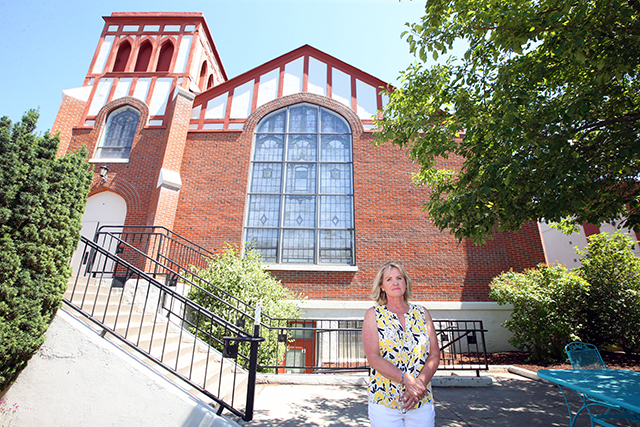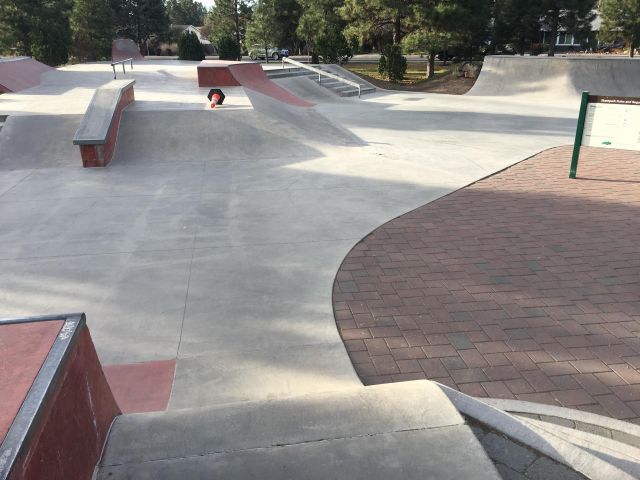Deschutes County health to spend millions to prevent opioid overdose
Published 5:30 am Tuesday, May 21, 2024

- Money from legal settlements with some opioid makers, distributors and sellers has been making its way to state and local governments to fight opioid addiction and overdose.
Deschutes County has received more than $1 million over the past two years in money to help curb opioid addiction, but has only spent a small faction of it in advertising, a website and hiring a community health specialist.
But that doesn’t mean the county isn’t doing anything to curb the rise of opioid deaths. Health officials have been expanding programs already established, such as passing out naloxone, the drug used to reverse an overdose from opioids.
Trending
To date, officials have approved spending $200,000 in the following:
• $115,203 for a full-time position and part of a supervisor’s salary, but only $25,396 has been spent so far
• $30,000 for prevention strategies, but only $13,170 has been spent so far
• $20,000 for program supplies, but only $406 has been spent so far
• $35,635 for a crisis program, but only $8,591 has been spent so far.
“The money is coming to us in dribs and drabs,” said Janice Garceau, Deschutes County Health Services director. “The money comes first to the county, so we put together a proposal in early 2023. The activities are happening. It’s just a budgeting issue of moving the money from the county coffers to the department.”
Trending
More money may find its way to Deschutes County because on May 14, the state Opioid Settlement Prevention, Treatment & Recovery board approved a plan to direct $13.7 million to strengthen the state’s substance use prevention workforce, including $9.5 million to counties to boost their workforces.
Opioid use
Opioid use has been on the rise. In the first seven months of 2023, there were 926 doses of naloxone distributed in Deschutes County. Nearly 200 people used the reversal drug to offset an overdose, and 141 people went to the emergency department for overdose treatment, according to a presentation to county commissioners. Current data are not available.
Mathew Christensen, the county’s epidemiologist, said in January that drug overdose deaths doubled in Oregon between 2019 and 2021, and rates have continued to rise since then, according to provisional data.
Read more: Deschutes declares emergency for fentanyl crisis
The 2021 settlement money from opioid producers to state and local governments is supposed to be used to counter overdose deaths. A total of $28 billion will be distributed to states over the next 18 years. Oregon has received $85.9 million to date, according to KFF Health News, which produced a state-by-state accounting of the settlement money.
The funds can be used to support activities that include:
• Training organizations serving high-risk individuals and raising community awareness on drug disposal;
• Providing naloxone to the community
• Collaborating with other agencies to prevent drug overdose and encourage treatment
• Developing surveillance and risk communications to respond to overdose deaths, similar to how the county responds to suicides
• Creating plans to identify root causes of addiction and overdose, establish goals to reduce harm related to the opioid epidemic and target populations with the greatest need.
To date, Deschutes County Health Services has hired one health specialist who starts Wednesday, May 22, spent $30,000 on advertising and website development and developed a real-time overdose death surveillance system and response plan.
“The opioid funds only augment work that the (county) health services already performs related to addressing substance use disorders and the opioid crisis,” said Kim Katchur, Deschutes County public information officer.
The Oregon Health Authority does not have any oversight on the funds going directly to the county from the settlement, said Jonathan Modie, a health authority spokesman.
The Oregon Department of Justice is responsible for collecting and reporting information about settlement expenditures, Modie said. Cities and counties are required to report to the Oregon Department of Justice each year how they have allocated funds, but reports for the fiscal year June 30, 2022, to July 1 2023, are still in review and are not public yet.
Making an impact
Where health officials could, they started the process even before the settlement money came to the county, Garceau said. Homeless advocates have naloxone they give away. At needle exchange events, naloxone is available for distribution, and the Deschutes County Stabilization Center also has naloxone for distribution, she said.
“We already are making an impact,” Garceau said. “We were already doing a lot of this work. We’ve had the harm reduction program going for years, the stabilization center for three years and prevention work in the public health for a number of years.
“These funds will allow us to support and expand on what we’re already doing.”
The budget process
The county has budgeted how it will spend the money it has received. The health specialist will cost $751,542 over a five-year period in salary and benefits. In addition, the county has set aside about $157,000 for part of a supervisor’s salary over the five-year period, leaving $466,000 for the nuts and bolts of prevention strategies, supplies and equipment, said Erik Kropp, Deschutes County deputy administrator.
The county budget shows that about 25% of the funds allocated have been spent, Garceau said. About $50,000 of the settlement money will go to support work with the community justice program.
In fiscal year 2024-2025, the county will receive an additional $192,076, according to the KFF Health News chart.
The development of a robust plan to spend the incoming dollars will be developed now that the health specialist has been hired.
“Knowing we had a gap, we tried to focus intentional efforts because this important community issue couldn’t wait,” said Jessica Jacks, Deschutes County prevention and health promotion program manager.
What that meant was community awareness campaigns, data surveillance to address the community with targeted solutions in the event of a spike or change, Jacks said.
Even though funds were allocated to the county in 2022 and 2023, they didn’t find their way to the county health budget until 2023-2024 fiscal year.
County health workers plan to educate first responders and arm them with naloxone to be left behind at a scene or to hand out at a needle exchange.
“We will expand our program to address the entire drug use population,” Jacks said. “We are not just targeting the houseless, but those that come to the behavioral health center or the needle exchanges in Bend and Redmond.”
Where to get help
If you or someone you care about is struggling with drug or alcohol use, here are resources that can help:
• Crisis services are available in Deschutes County through the Suicide and Crisis lifeline, which can be reached via call or text at 988, or 541-322-7500 ext. 9. People can also walk into the Stabilization Center at 63311 NE Jamison St. in Bend, which is open 24 hours a day, seven days a week.
• Substance Abuse and Mental Health Services Administration national helpline: 1-800-662-4357.
• Find treatment near you at findtreatment.gov.
• Lines for Life, the drug and alcohol helpline, is for individuals and family members seeking crisis intervention, treatment referral, and chemical-dependency information. Call 800-923-4357 or text “Recovery Now” to 839863.
• A teen-to-teen crisis and helpline for youth and teens is available from 4-10 p.m. on weekdays via phone at 877-968-8491 or via text at ‘teen2teen’ to 839863.
• For information about opioids, fentanyl and response, visit Deschutes County Health Services website www.deschutes.org/stopoverdose.
Oregon overdose deaths
Preliminary data from the Center for Disease Control and Prevention shows Oregon had slightly more than 1,800 estimated overdose deaths in 2023, up from about 500 in 2016.








